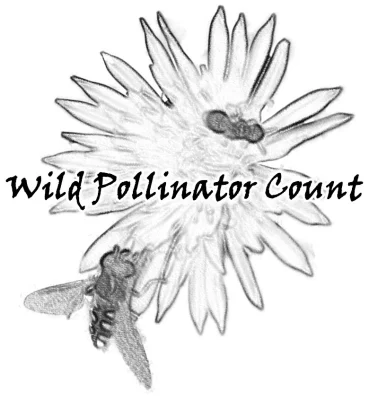Big thanks to everyone who participated in our 10th Wild Pollinator Count in autumn. With 629 submissions from 266 localities, this was not only our biggest autumn count (previous record was 363) but it surpassed our all-time record as well (600 submissions from last spring).
See the locations from which submissions came on this interactive map. We’re delighted to note all states and territories are represented.
In total, 5,806 insects were recorded across our submission categories:
| Number | as % | |
| Bees – European honey bees | 3,283 | 56.5% |
| Bees – Blue-banded bees | 274 | 4.7% |
| Bees – Other bees | 865 | 14.9% |
| Beetles – Ladybird beetles | 128 | 2.2% |
| Beetles – Other beetles | 103 | 1.8% |
| Butterflies and moths | 340 | 5.9% |
| Flies – Hover flies | 199 | 3.4% |
| Flies – Other flies | 468 | 8.1% |
| Wasps – European wasps | 34 | 0.6% |
| Wasps – Other wasps | 112 | 1.9% |
| Total | 5,806 |
Insects reported
As well as recording more insects than previous rounds (thanks in part to the increase in observations submitted), this count included more honey bees as a percentage of sightings (57%) than previous autumn counts (for example, they were 46% of last autumn’s observations). Blue banded bee percentages were fairly similar this autumn (about 5%) to last (at 6%). However ‘other bees’ came in this year at about 15%, yet made up 27% a year ago. These are mostly, but not always, native bees. We again had some bumble bee records from Tasmania this round, and they fall in this same category.
Otherwise, there were fewer reports (in percentage terms) of butterflies and moths this season (6%) compared to last (9%) while hover flies made a bit more of an appearance (3.4% to 1% last year). Of course we hope to drill into this data, and that of the previous counts, to better identify any potential trends.
As usual, we excluded the 942 ‘other’ or ‘unsure’ visitors noted from the above overview as they are unlikely to be pollinating. Observations in this category (when known) often include ants, which tend to be nectar robbers rather than pollinators, insects such as aphids and bugs, spiders and even occasionally birds. Rest assured we have noted these details, and are interested in them, but they don’t appear in that data table above as they are not our primary focus.
Plants in flower
There were more counts completed on exotic plants (71%) than native plants (29%) than previous autumns. Many participants noted that dry conditions in their area meant there were few native plants flowering.
Similarly, many participants noted that numbers of either flowering plants or specific insects were lower during our count period than over summer and sometimes in the weeks before the count. In some ways this is to be expected with activity for many insects dropping off as we head into winter. We are keen to continue running our counts in our designated spring and autumn periods to see how they compare to each other, and from year to year. Our detailed analyses seek to better understand the relationships between flowers (generally or particular types) and insect absence or numbers. While this is a very simple study, we are interested in what it can reveal.
We received a number of ‘zero’ counts where a plant was observed for ten minutes but no insects visited. This, too, is valuable data and we send a special thank you to those who submitted their zero counts (especially because it can be tempting to go elsewhere instead of wait out the ten minutes when there are no visitors!).
There were also around a dozen submissions we can’t include in our data set. We had two counts undertaken overseas; a couple with estimated numbers of insects rather than firm figures; and some noting observations across multiple plants. As we’re trying to investigate the visitors by plant, we can’t include that data. Our count instructions help to standardise our data, which makes it more useful. Regardless, we hope those records have added to the collectors’ awareness of pollinator insects.
And the photos …
Although submitting photos of insects you observe is not required as part of the count, many participants again shared some of their favourite sightings with us or sought our advice on an insect they saw. More than 300 photos were emailed to the project with yet more shared via social media and biodiversity mapping sites like iNaturalist and NatureMapr. We were excited to have some records in our new iNaturalist project.
Photos also help us to better understand which categories or insects participants find tricky (or easy!) to identify. Blue banded bees continue to be a “poster-insect” for Wild Pollinators. Check out our gallery of photos from the autumn 2019 count for more (and note the clever photographers who took them!).
What’s next?
We’ll incorporate these latest results into our dataset and continue working towards publishing both the data and findings to date.
Once again, a huge thank you to all who contributed to these terrific results. We hope you’ll consider joining in again – our next count is in spring 2019, from November 10 to 17.



Hi. I sent u an email with comments today. I just wanted to confirm my correct email address –below. Ian Simons
LikeLike